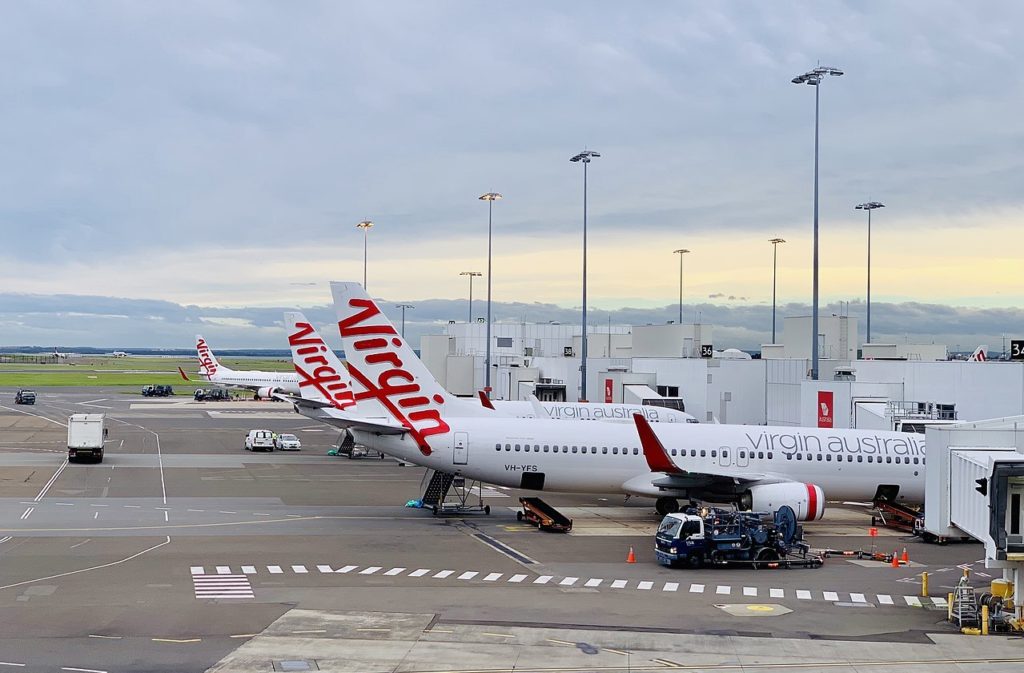In a return to profitability after 11 years, Virgin Australia has reported a statutory NPAT of $129 million, marking a significant achievement in the company’s history.
After a grueling 11-year period of financial challenges, Virgin Australia made a remarkable comeback, with revenue more than doubling to $5 billion compared to the previous year.
This impressive performance can be attributed to the company’s robust response to increased customer demand in the wake of the COVID-19 pandemic.
Virgin Australia’s underlying EBIT of $439 million, representing a margin of 8.8%, further underscores the strength of this revival.
The Road to Recovery
Virgin Australia’s Airline business, encompassing domestic, international, and regional and charter flying, played a pivotal role in this resurgence.
This segment reported a staggering revenue of $4,873 million, marking a remarkable 126% increase due to heightened flying activity.
The underlying EBIT of $362 million, with a margin of 7.4%, demonstrates the resilience and adaptability of the airline during challenging times.
[monsterinsights_popular_posts_inline]

Loyalty Business Soars
Virgin Australia’s loyalty business, Velocity, also experienced significant growth, with recorded revenue of $330 million, reflecting a remarkable 68% increase.
This growth was accompanied by strong member expansion throughout the year, reaching an all-time high of 11.5 million members.
The underlying EBIT of $77 million, with a margin of 23.4%, showcases the success of Velocity as a core part of the company’s profitability.
Meeting Customer Demand
One of the key drivers behind Virgin Australia’s triumphant return to profitability was the resurgence in travel demand.
Leisure travelers flocked to the airline, and SME customers returned to pre-COVID levels. Furthermore, a steady recovery of corporate travelers contributed significantly to revenue.
Efficiency initiatives played a critical role in enhancing profitability despite the challenges posed by higher fuel prices.
Virgin Australia’s ability to meet customer demand amid cost-of-living pressures was pivotal in this remarkable turnaround.

Virgin Australia CEO Comments
Virgin Australia’s CEO, Jayne Hrdlicka, provided insight into the company’s vision and achievements, stating, “These results are an important milestone for Virgin Australia.”
“It has been 11 years since Virgin Australia returned a profit, and our results signal that the transformation of Virgin Australia is progressing well. We have a long-term commitment to transformation and are only part-way through this multi-year journey.”
Investing in the Future
Hrdlicka then turned discussion towards the future for the carrier, saying, “By creating a systemically lower cost base and a conservative balance sheet as well as investing heavily in technology and our frontline, we are well positioned for the future.”
“Our investment in frontline transformation continues, and is designed to boost capability, customer experience, and operational efficiency.”
“Our recent announcement of a $110 million cabin upgrade, arrival of the first of our new 737-8 aircraft, market-leading baggage tracking app, and Rapid Rebook technology launch all help us to create experiences our guests love.”
Hrdlicka further emphasized Virgin Australia’s commitment to providing value and choice, especially as the cost of living impacts household budgets.
“Value and choice are core to our business, and as the continuing rise in cost-of-living impacts household budgets, we believe we are well positioned to continue to provide customers with the best value in the market.”
Strengthened Balance Sheet
Virgin Australia’s CFO, Race Strauss, highlighted the strengthened financial position, stating, “Our balance sheet is now considerably stronger, and the cost base of the business has significantly improved from recent years.”
“Future transformation plans put us in a good position to manage cost headwinds and continue to improve our business.”
Strauss continued, “Virgin Australia is now in a very strong capital position, with total debt including leases now $2.3 billion and over $1 billion of cash on the balance sheet, providing the platform for future investment in transformation and growth.”
“Our transformation plan is well underway and has set up the business for the future.”

Click the banner to subscribe to our weekly newsleter.









